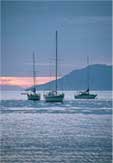
Logbook: Singapore and Malaysia (October 2015 to May 2016)
After spending three months sailing through the islands of Indonesia, in late October we set off across the Singapore Straits. Our plan was to stop in Singapore for a week or so and then continue north and spend the next few months sailing in Malaysia and Thailand. However, as we've said before, our plans are written in the sand at low tide, and a big wave came along and washed those plans away. We ended up with a very different itinerary due to the shoulder injury Rich sustained at our last stop in Indonesia, but it wasn't all bad.
When we motored across the Singapore Straits from the Riau Islands of Indonesia, we left behind a "developing nation" and traveled to a country that is very "first world." Visiting yachts are not allowed to anchor in Singapore waters, so we made a reservation in the One15 Marina on Sentosa Island. Immigration clearance was done in the Western Quarantine & Immigration Anchorage (WQIA) before we could enter the marina and was very efficient. We completed customs and port clearance at the Maritime & Port Authority (MPA) Office, a modern, air-conditioned office and again a very efficient process.
The One15 Marina is part of a "waterfront lifestyle community" with high-rise residential buildings and private club facilities, including an infinity pool, spa, fitness center and restaurants. This was by far the nicest marina we've ever stayed in, and although it wasn't inexpensive, we were pleasantly surprised that a short stay was well within our budget. At this marina, we had access to a free shuttle bus (used mostly by the club and marina employees) which ran almost every half hour to and from the Vivo City Mall, where we could catch the subway or a bus to virtually anywhere in the city.
Singapore
Singapore lies one degree north of the equator just off the southernmost tip of continental Asia and peninsular Malaysia, with Indonesia's Riau Islands just a few miles to the south. Geographically, It is the world's 19th smallest country, covering an area of just 687 square kilometers (265 square miles). But, don't let its small size fool you!
The Kingdom of Singapura (the native Malay name) was established in 1299 as a trading port city and came to be under control of the Sultan of Johor. In 1819, Thomas Stamford Raffles signed a treaty with the Sultan of Johor to develop Singapore as a British trading post. Prior to Raffles arrival, there were only about 1,000 people living on the island, mostly indigenous Malays and a few Chinese. By 1860, the population had grown to more than 80,000, over half of which were Chinese. Many of the immigrants came to work on rubber plantations, and by the 1870's, it was a global center for rubber exports.
In World War II, Singapore fell to the Japanese in 1942 after a hard-fought battle, which Winston Churchill referred to as the "worst disaster" in British military history. The Japanese occupied Singapore until 1945, and the British repossessed it after the Japanese surrender. The 1950's and 60's were unsettled times for Singapore with the threat of communism in Southeast Asia and race riots. In 1963, Singapore joined with three other former British colonies to form the country of Malaysia, but due to ideological differences, Malaysia expelled Singapore in 1965. Lee Kuan Yew was Singapore's Prime Minister at that time, and he was extremely concerned that the country could not make it on its own due to their limited size, scarcity of water and natural resources and lack of a developed economy. However, Lee Kuan Yew led the country from a third-world economy to first-world affluence in a single generation. The nation developed rapidly based on external trade and its human capital. Their economy is diversified - financial services, manufacturing and oil-refining are the top contributors. Singapore has attracted a large amount of foreign investment as a result of its location, skilled workforce, low tax rates and advanced infrastructure. Singapore also has zero tolerance for corruption. A great read for further insights on the development of Singapore is the book From Third World to First: The Singapore Story -1965 to 2000 by Lee Kuan Yew.
Singapore has the third highest per capita income in the world, taxes are low, and despite the fact that Singapore is one of the world's most expensive places to live, 90% of residents own their own home. It has the world's highest percentage of millionaires, with one out of every six households having at least USD $1 million in disposable wealth. However, there is no set minimum wage in Singapore, and income inequality is a hot topic. Singapore has a total population of 5.5 million, of which 3.4 million are Singaporean citizens, 0.5 million are permanent residents, and 1.6 million are non-residents or foreign nationals. The Singaporean population is 74% Chinese, 13% Malay, 9% Indian and 4% other races. Singapore has four official languages - English, Mandarin, Tamil and Malay. English is the main working language and is used for education.
Singapore operates the second-busiest port in the world (Shanghai is number 1), their airport is consistently rated as the best in the world, and Singapore Airlines is one of the top-rated airlines in the world. Singapore has an excellent public transportation system, and its trains and buses are spotless. Graffiti is against the law (an offense punishable by caning), and eating and drinking on the subway or buses is against the law (up to a $500 fine). Singapore has a lot of laws and rules, and there are those who try to label Singapore as a "police state," but we had no issues with following their rules, and we found the city to be very clean and very safe.
Singapore (October 27 to November 4). When we pulled into the One15 Marina, we took stock of our surroundings - wow, this was nice! Heather & Jon (s.v. Evergreen) came into the marina at the same time, and we were all looking forward to seeing a bit of this city. After securing our boats in our respective berths and checking in at the marina office, we hopped on the marina bus to the Vivo City Mall. We planned to have some lunch and then head to the MPA office to complete our customs paperwork. When we arrived at the mall, we headed to the "Food Republic" on the top floor. We assumed the "Food Republic" was their food court, and it was, but it was very different from what we were used to. Singapore is famous for its "hawker stalls," which are food booths selling a variety of Asian dishes - Chinese, Indian, Malay, Indonesian and Thai - rice and noodles, soups, satays and stir-frys. McDonald's, Pizza Hut and Subway had no presence in this food court (although we did find them elsewhere in the mall on subsequent visits). The Food Republic was packed with local people having lunch. The area was filled with big tables - everyone just finds a spot and sits with whomever else is at the table. Especially on this first visit, the hawker stalls were a bit overwhelming to us. The dining area was crowded and loud, and although there were a lot of food choices, most of them were unfamiliar to us. We spent quite a bit of time wandering around looking at options before finally settling on food selections. The food was good and cheap. After lunch, we walked to the MPA office, which was about 3 km away (a little less than 2 miles). We needed the exercise, but the walk was hot and sweaty, so the air-conditioning in the MPA office was a welcome respite. It took us about 30 minutes to complete all the required paperwork, and the MPA officer apologized to Jan that it took so long. Jan assured her that a half-hour was quite reasonable, and the officer was shocked when Jan told her that it took us three days to get our port clearance in Indonesia. After finishing at the MPA office, we walked back to Vivo City and caught the bus back to the marina, where we cooled off in their lovely infinity pool. The changing rooms at the pool also had wonderful showers, with big fluffy towels available for our use. This was pure luxury!!
Entrance to the One15 MarinaOver the next few days, we saw a few of Singapore's highlights. We spent a day at the Singapore Botanic Gardens, and the National Orchid Garden was the most beautiful and extensive collection of orchids we'd ever seen. Of course, the climate here is perfect for growing them. We also spent a day at the Singapore Zoo, which was delightful, but also disturbing as we read about how many of the animals on display were endangered species. We spent a day in Chinatown, ate delicious Dim Sum for lunch and visited the Buddha Tooth Relic Temple and Museum, as well as the Sri Mariammam Hindu Temple. On our last day in Singapore, we visited the Gardens by the Bay, one of the newer "green spaces" in the city. Singapore's government recognized early on that urbanization of the island had a significant impact on the environment. The island was once covered with rainforest, and 95% of that is now gone. In 1967, the government introduced a vision for making Singapore a "Garden City" and since then, nearly 10% of Singapore's land has been set aside for parks and nature reserves.
The two of us at the Singapore Botanic Gardens
Just one of the many beautiful orchids on display
in the National Orchid Garden
Bromeliad garden at the Singapore Botanic Gardens
Photo opportunity with a couple of our cousins.
Orangutans are endangered mostly due to habitat destruction.
We were pleased to learn that the Singapore Zoo is contributing to the
conservation of Orangutans and have successfully bred 42 of them.
Oops! Sorry - didn't mean to interrupt!
We hope these two white rhinos are making more
babies to help preserve their species.
Asian small-clawed otters live in various areas throughout Southeast Asia
and are considered "vulnerable" due to habitat destruction and pollution.
Delicious dim sum at the Tak Po Restaurant in Chinatown
Inside the Buddha Tooth Relic Temple & Museum
Sri Mariammam Hindu Temple
Gardens by the Bay in the background
These tree sculptures seemed a little odd to us, but the
trunks are covered with beautiful bromeliads, and
at night they are quite pretty when they are lit up.
View from Gardens by the Bay of the iconic
Marina Bay Sands Hotel & CasinoAs we toured around Singapore, we were able to get pretty much everywhere on the MRT (subway system) or buses. The "City Mapper" app on our smart phone was especially helpful in determining which train or bus to take, and even which exit to choose when departing the subway station. We tried more hawker stall food and became less overwhelmed by the choices, occasionally asking a local for advice on which stalls or foods they recommended. We really liked this city.
We also enjoyed meeting a few local Singaporeans. The boat next to ours on the dock was a large power catamaran used for taking out day charters, and the captain Richard was a friendly guy who always said hello when we saw him. One day he came over and asked if we could do him a favor. He had a bottle of wine in his hands and said that it was leftover from a charter trip. He told us he didn't drink wine, and we could help him out by taking the wine off his hands because it would go bad if he left it on the boat in the heat. It was a hard decision, but we were happy to help him out!
We also met a couple of Australian ex-pats who had been living in Singapore for a couple of years, and they have since become good friends. Our friend Laura Taylor in Brisbane, put us in touch with her friends Sivea & Mario Pascale, and we arranged a get-together with them for brunch on a Sunday. We hit it off with them immediately, and after lunch, we went for a walk through the Clarke Quay area and along the Singapore River. They then invited us to spend what was left of the afternoon hanging out at their apartment, and we ended up staying for dinner. It was a delightful day, and Sivea has since told us that when we left she was thinking how nice it was that we had gotten on so well, but it was a shame that we would probably never see each other again. Little did she know!
The Old Hill Street Police Station near Clarke Quay
Hanging out on a Sunday afternoon with Sivea & Mario
Dinner at Sivea & Mario's apartment, with a beautiful view of Marina BayPassage from Singapore to Port Dickson, Malaysia (November 4 - 5, 153 nautical miles, 26 hours). After 8 days in Singapore, it was time to move on. From here, we would be heading north along the west coast of the Malaysian peninsula to Port Dickson. We processed our port clearance at the MPA office the day before leaving, and the morning of our departure, we again met the Immigration boat in the WQIA for clearance before heading off. We spent the first couple of hours of this passage motoring through the waterways on Singapore's southwest side, where an incredible number of big ships are anchored or moving about. Jan had finally figured out how to turn off the AIS alarms for anchored ships, but the AIS still beeped quite frequently to alert us of potential close encounters. It was manageable, however, and the AIS was a good addition to using our eyes because it made it easier to identify which ships were moving and which ships were not. We started out with a favorable current giving us a push, and we were happy to be making good time - and happier still when we passed the entrance to the Johor Straits and started our journey north in the Straits of Malacca. The Straits of Malacca are one of the worlds busiest shipping lanes, so there was still a lot of big ship traffic, but there is a designated traffic pattern in the shipping lanes, so it was more predictable than motoring through the anchorages of Singapore.
Clearing Immigration at the WQIA - service with a smile!
Looking for the best route through the anchored ships
Our AIS topped out at 128 targets, but there may have been more than that
in the anchorage (the big blob on the screen) we drove through.There were places to stop and anchor along the way from Singapore to Port Dickson, thus breaking the trip up into a few days, but we chose to do an overnight passage to arrive the following day. In addition to shipping traffic, there is also quite a bit of local fishing activity along the Malaysian coast, which can be especially treacherous at night because it's easy to get tangled in unlit nets or lines. The fishing activity kept clear of the shipping lanes, however, so the protocol for running at night was to stay right on the edge of the shipping lanes. We traveled along the "magenta line" on our charts (demarcating the shipping lanes), running north with the shipping traffic, and Evergreen followed along right behind us. We and Evergreen both have AIS transponders (a requirement to enter Singapore) so the big ships could see our AIS signals and were aware of our presence - or at least we hoped so! Lots and lots of big ships passed us in the night. At 0230 Jan noted in the log that a container ship by the name of CMA CGM Hydra passed us by, and the details on our AIS said that it was 348 meters long (1,142 feet) with a 46 meter (150 feet) beam. That was one big ship!
This is exactly what we wanted to avoid -
a local fishing boat dragging long nets behind it
Traffic thinned out in the Malacca Straits -
only 16 targets in our 12 nautical mile rangeThere was very little wind, so this was a motor trip. We had no issues with the shipping traffic, and it was mostly an uneventful passage with the exception of some squally weather which hit us as we passed the port of Melaka in the wee hours of the morning. There wasn't much rain or wind, but there was a lot of lightning, and the seas in that area were quite choppy due to strong currents. But we carried on and made it through with no issues. We pulled into the Admiral Marina & Leisure Club around 10 the following morning.
Malaysia Malaysia is a federation of 13 states, 11 of which are located on Peninsular Malaysia (between Thailand and Singapore), and 2 are located in East Malaysia on the island of Borneo. Malaysia covers an area of over 330,000 sq km (127,000 sq miles), which is similar to the area covered by the U.S. states of Florida and Georgia combined. Kuala Lumpur is the capital and the largest city in Malaysia, with a population of over 7 million in the greater metropolitan area.
In 2016, the total population of Malaysia was estimated at 31.7 million. Malaysia is multi-ethnic and multi-cultural with approximately 70% of the population ethnic Malays (also called Bumiputera), 20% Chinese, 7% Indian and 3% other races. Significant waves of Chinese immigrants arrived in the 1400's as traders and merchants and again in the 1930's to work in the tin mines and on rubber plantations. The bulk of the Indian migration occurred during the British Colonial rule (1800's to 1957). Malay (or Bahasa) is the official language, and English is a popular second language.
The Muslim religion was introduced to Malaysia by traders arriving from Arabia, China and India and became firmly established in the 15th Century. Malaysia's constitution declares Islam the state religion but allows freedom of religion for non-Muslims.
Prior to the 1970's, Malaysia's economy was primarily based on mining and agriculture, but thereafter, it transitioned to a more industrialized economy, which has led the country's economic growth since then. Malaysia has one of the top economies in Southeast Asia (third or fourth, depending on the source). Malaysia is one of the world's largest exporters of semiconductor devices, electrical devices and IT and communication products. Their economy is also expanding in the sectors of science, tourism, commerce and medical tourism.
Port Dickson, Malaysia (November 5 to 28). The Admiral Marina and Leisure Club in Port Dickson is also built adjacent to a hotel and high-rise residential buildings, and it too had a pool which was refreshing on the hot days. It wasn't as "posh" as the One15 Marina in Singapore, but for the most part, it was a nice place (and about half the price of Singapore). Check-in with the officials in Malaysia was also fairly easy and straightforward once we found the right Immigration office - a bit of a kerfuffle with a taxi driver dropping us off at the wrong Immigration office and our very vague map. But, we eventually found our way and managed to get all our clearing-in paperwork done on the day we arrived.
Pool at the Admiral Marina & Leisure Club in Port Dickson
Rich was not allowed to wear his Speedo hereThe Admiral Marina in Port Dickson would be hosting the Sail Malaysia Rally of boats in about 10 days time, but a few boats like us arrived a bit ahead of schedule, and it was nice to run into some other sailing friends. Although our experience with the Indonesia rally indicated that we weren't necessarily the best of rally participants, this rally had a short schedule and offered some excellent marina discounts, so we signed up for it. The rally kicked off in Johor Bahru, Malaysia (across the Johor Straits from Singapore), and we missed that stop, but we were able to join up with the group in Port Dickson.
Upon arrival in Port Dickson, we had a few days to relax and do a few chores before a planned trip into Kuala Lumpur. Jan needed to catch up on some laundry, and although she could have given it to the marina office to have it done for her, Heather (s.v. Evergreen) told her that she found a great laundromat - with washers AND dryers! - just up the street (about a kilometer away). So Jan loaded a couple of bags of dirty laundry on to our folding hand cart, and started walking up the road with it. She hadn't gotten very far when a car stopped and asked her if she wanted a ride. Jan had never before seen the folks offering her the ride but thought they were probably boaters from the marina. It was hot and muggy outside, so she was happy to get a lift. They threw the laundry in the trunk, and Jan hopped in the car with the couple, who introduced themselves as Stephen and Mei. Stephen and Mei did not have a boat in the marina, but had a condo in one the adjacent high-rises. When they dropped Jan off at the laundromat, Mei asked if we'd like to come over for drinks that evening. Well, of course! We exchanged phone numbers, and that evening we had drinks at their condo, and after drinks they took us to dinner at the Royal Port Dickson Yacht Club. Although the Royal Port Dickson Yacht Club name sounds a bit snobbish, it was a casual and comfortable gathering place with good food. We had the opportunity to spend more time with Stephen & Mei over the next few weeks, and really enjoyed getting to know them. Stephen was born the UK, and Mei was born in Malaysia. They met in their 20's in London and are both Chartered Accountants. They are retired now and have a home in the UK in addition to their condo in Port Dickson. We meet the most interesting people in our travels!
A few days after our arrival in Port Dickson, we left Slip Away in the marina and headed into Kuala Lumpur ("KL"). While still in Indonesia, we had gotten an email from Rich's friend Larry Dietz saying that he and his wife Marlene would be in KL on a business trip for a few days in early November, and the timing was perfect for us to meet up with them there. Larry and Marlene were staying at the Mandarin Oriental Hotel in KL, which is a bit steep for our normal budget, but we were familiar with the hotel chain and longed to spend a night there. (We had stayed at a Mandarin Oriental Hotel in Bangkok in the late 1990's, and in our minds, it still ranks as the nicest hotel we'd ever stayed in.) Although expensive, the Mandarin Oriental in KL was not ridiculously so, and we decided to use some credit card points to splurge on one night there and book a less expensive hotel for the following days.
Heather & Jon (s.v. Evergreen) were also heading into KL for a few days of sightseeing, so rather than dealing with buses and/or train schedules, we shared a cab into the city, which is about 90 minutes from the marina. We arrived in KL late morning, and the hotel let us check in early. Larry & Marlene had just arrived from the States that morning, and Larry was working that day. We thought Marlene might be catching up on some sleep, so we decided to just hang out and enjoy our beautiful hotel room for a few hours. We had a room on the 26th floor with a view of the KLCC Park, and the bathtub was divine! We caught up with Marlene at happy hour and then met up with Larry and his friend Aaron for dinner. Rich has known Larry since they were kids in Southern Illinois. Rich grew up on an apple orchard, and Larry grew up on a dairy farm. Larry is now the President of Illinois State University, and he and Marlene were in KL on a recruiting trip. Aaron was a student at Southern Illinois University when Larry was working there, and he was happy to see Dr. Dietz again and provide assistance in his recruiting efforts.
Enjoying a comfy seat in the lobby of the posh Mandarin Oriental Hotel
View of the KLCC Park from our room
at the Mandarin Oriental
The weather is hot in KL, so the pool at the KLCC Park
was a great place for locals to cool off.The day after we all arrived in KL was the Hindu festival of lights celebration called Diwali (aka Deepavali). It was an official holiday in Malaysia, so Larry did not have to work. Aaron was celebrating the holiday with his family, so we did some sightseeing with Larry & Marlene. We first went north of the city to the Batu Caves, which is a Hindu shrine, and the holiday celebrations were in full swing there. The locals were dressed in beautiful traditional clothing, and the temples inside the caves had many visitors. It was truly a very special day to visit the Batu Caves. After the caves, we got on one of those "hop-on, hop-off" bus tours that drive you around to the highlights of the city, but we were so busy chatting and catching up with one another, that we really didn't pay all that much attention to the places it took us. Later in the afternoon, we headed back to the Mandarin Oriental and collected our bags from Larry & Marlene's room so we could go and check into a hotel that was more in line with our budget. We would meet up with Larry & Marlene for dinner later that evening.
The two of us with Larry & Marlene at the Batu Caves.
We are standing in front of the status of Lord Muruga, the Hindu god of war, and we were all pretty sweaty from having just climbed the 272 steps
to visit the Hindu shrines inside the caves.
Rituals of Diwali include lighting candles and offering
prayers to Lakshmi, the Hindu goddess of
fertility and prosperity
Lovely ladies dressed up in their finest for the Diwali holiday
When we checked into the Crossroads Hotel in KL, we were prepared to be disappointed after our stay at the Mandarin Oriental, but we were pleasantly surprised. Upon arrival, we were greeted by the manager, Dimple, a young Malay woman who spoke English like an American. When we commented on her accent, she told us she watched a lot of American TV when she was a kid. Dimple was incredibly friendly and helpful to us. When we told her we would be meeting Larry and Marlene for dinner, she not only recommended a restaurant, but also wrote down a list of dishes she thought we would enjoy - and they were excellent recommendations. The hotel rooms here were modern, neat and clean, and it was in a good location near a train station. The first time we took the train, however, we had a bit of an embarrassing moment. When we got on the train, the car we boarded in was a bit crowded, so we walked to the next car which had some open seats. We sat down, and Jan looked up and noticed the sign saying "Women Only." Oops!!! She quickly nudged Rich out of his seat, and we found seats in another car.
We stayed in KL for a few more days, enjoyed more time with Larry & Marlene and saw a few more sights. While there, we also made an appointment for Rich to see a doctor about the shoulder he injured in Indonesia. It had been a couple of weeks since the injury, and we were hoping that the shoulder might improve during that time, but it had not. Rich's arm did not hurt in a resting position, but he winced in pain if he tried to lift his arm in front of him or over his head - definitely not a good thing, and especially on the boat. Rich saw a general orthopedic surgeon who ordered an MRI. The day following his MRI, we went back to the doctor who told us that Rich had only a slight tear in his rotator cuff, so no surgery was needed. The doctor wrote him a referral for physiotherapy (or physical therapy as we Americans call it), and sent us on our way. Jan was ecstatic, but Rich wasn't convinced.
KL's iconic Petronas Towers.
Petronas is Malaysia's national oil company.
Diwali decorations inside the
Petronas Towers Shopping Mall
When we took this photo of these Petronas-sponsored Formula One
race car models, we had no idea that we would end up watching almost
all of the Grand Prix races the following season.
An ancient Qur'an at the Islamic Arts Museum
We were required to wear appropriate attire when visiting
the National Mosque of Malaysia. Rich also needed a
robe because he was wearing shorts.
Dinner in KL with Larry, Marlene and AaronWhen we returned to the marina in Port Dickson, we were happy to see that our friends Peter & Lynne (s.v. Sunchaser) had arrived during our absence, and as it turned out, it was quite fortunate for us too. Peter is a Radiology Doctor with a specialty in Orthopedics (previously practiced in both Australia and New Zealand), and he offered to read Rich's MRI. Peter found some additional damage to Rich's rotator cuff that was not indicated in the radiology report, and he recommended that we find and schedule an appointment with a shoulder specialist.
While we were determining a course of action for Rich's shoulder, the Sail Malaysia Rally came and went. We joined in on some of the rally festivities, including a bus tour into the interior highlands of Negiri Sembilan, and we enjoyed the social gatherings. We also had the opportunity to spend a bit more time with Stephen and Mei, including an evening at the Royal Port Dickson Yacht Club where we danced to music by a band whose members did great imitations of Elvis and Tom Jones - a very fun night! Stephen and Mei were also very kind to offer us rides to the nicer grocery stores in town and took us to the Tesco store (similar to a Walmart) to buy an air conditioner for our boat. Rich attended a few physiotherapy sessions to see if that might help his shoulder, but no joy there.
Touring an organic farm in Negiri Sembilan with the Sail Malaysia Rally
Locals put on a traditional dance performance for the
Sail Malaysia Rally group
Lunch at the Royal Port Dickson Yacht Club with Stephen & MeiWe ended up putting a fair amount of time and effort into deciding what to do about Rich's shoulder. We went back to KL, where he saw a shoulder specialist who agreed with Peter's findings and recommended surgery. But having the surgery in KL had logistical issues - we would need to rent an apartment there for a couple of months - and the surgeon didn't knock our socks off. We made some contacts in the USA and seriously considered flying home since Rich has Medicare coverage. But there were a bunch of issues with that option too - not the least of which is that we didn't have a home or a car, and it would be winter time. After another doctor friend suggested that we check out Singapore, we found a couple of shoulder specialists there and took the bus from Port Dickson to Singapore (about 4½ hours). When we met Dr. Tan Chyn Hong at The Orthopaedic Centre in Singapore, and we both felt confident in him and his abilities. He also recommended surgery, and we scheduled it for the following week. After our morning consultation with Dr. Tan, Rich completed all of his pre-op tests - chest x-ray and blood work - before catching the bus back to Port Dickson that afternoon.
The surgery in Singapore was quite a bit more expensive than in Malaysia, but we have international health insurance for situations such as this and would meet our deductible no matter where the surgery was done. Since we would also need to work out living arrangements, while Rich was doing his pre-op tests, Jan contacted the One15 Marina and confirmed that they would have a berth for us. Monthly berthing fees would be expensive (about USD$1,000 per month), but we felt it was still our best option. We also knew we'd need to get the surgery pre-approved by the insurance company, so while on the bus back to Port Dickson, Jan called the insurance company to start that process. It was Thursday afternoon in Singapore, so shortly after midnight on Thursday morning at the insurance company's office in Indiana (13-hour time difference). Since we have an "international" insurance plan, Jan assumed that the insurance company would have a 24-hour telephone service. Jan reached a representative who started the necessary paperwork, but he advised her that the insurance company offices were closed for the Thanksgiving weekend, so they would not review anything until the following Monday. Monday morning Indiana time was Monday night our time, so the earliest we would have approval would be Tuesday, assuming there would be no questions from the insurance company. Ugh!!! Rich's surgery was scheduled for Wednesday, but given the holiday and the time difference, we weren't sure if we would have approval in time, so we called the surgeon and re-scheduled for a day later. So, now his surgery was scheduled on December 3, which is Jan's birthday.
We arrived back in Port Dickson on Thursday evening, and on Friday, we did our clearance paperwork with the Malaysian officials and also emailed our Advance Notice of Arrival to the Singaporean officials. We said good-bye to Stephen & Mei and departed for Singapore on Slip Away on Saturday morning.
Passage from Port Dickson, Malaysia, to Singapore (November 28 - 29, 153 nm, 29½ hours). The passage back to Singapore was ever-so-slightly more complicated than the passage north. If we wanted to ride the outside edge of the southbound shipping lanes, we would have to cross over both the northbound and southbound lanes of traffic twice. That wasn't impossible, but we weren't particularly keen on doing that. The alternative, and the route that we chose, was to run south close to, but outside, the edge of the northbound shipping lanes. On our way north, we saw a number of tugs and tows traveling southbound in this "inshore traffic zone." We just needed to stay close enough to the shipping lanes to avoid fishing nets. This plan worked just fine.
We left Port Dickson on the high tide and enjoyed a nice push from the current until mid-afternoon when the tide turned against us and our speed over ground dropped below 4 knots. Overall, we experienced more adverse current on the trip south, so the trip took about 3 hours longer than the trip north, but we still made decent time. Rich saw one unlit fishing boat on his evening watch, but a nice moon made it visible. Jan had no fishing boats (or at least none that she saw), but she had to keep her eyes on a few tugs and tows on her midnight to 6 am watch. We cleared Immigration again in the WQIA and headed into the One15 Marina. Returning to a place we know and like actually provides us with a bit of comfort. The staff at One15 helped us tie up in our berth, which was just across from the berth we were in the last time. Our friendly neighbor Richard came over to say hello and gave us another bottle of wine. Thank you!!
We saw tugs towing a variety of things - this one is towing a crane.
Coming into Singapore with some big ships
Those are some huge fenders on this tug!
Singapore (November 29, 2015 to February 23, 2016). When we arrived in Singapore, we had a few days before Rich's surgery, which gave us some time get organized. Dealing with our insurance company was a bit frustrating because any phone communication needed to be done within their office hours, which were 8 a.m. to 4 p.m. EST in the USA, which meant 9 p.m. to 5 a.m. our time, but our insurance agent was very helpful and pushed to get the surgery approval done ASAP once their offices opened after the Thanksgiving holiday. The folks in the marina office were also very accommodating when we expressed concern that our berth was out near the end of a dock, which was a bit wobbly at times, and they offered us a spot right in front of the dock gate. The new berth was owned by Princess Yachts, but they weren't using it for the time being, so we could use it as long as they didn't need it (which ended up being the duration of our stay). There was only one other cruising yacht in the marina at that time - s.v. Enchantment with Vern & Michelle. Michelle also had an early December birthday, so on December 1, the four of us celebrated Michelle & Jan's birthdays with dinner at the One15 Bistro. Rich's surgery was scheduled for 8 a.m. on December 3, and as directed, we arrived at the GlenEagles hospital at 6 a.m. While completing his check-in paperwork, the admissions representative asked for the guarantee of payment from our insurance company, and Jan handed her the letter our insurance company had provided. Our insurance agent had told us that the insurance company could pay the hospital directly, but after the admissions rep checked in her computer, she informed Jan that they did not have a direct-pay relationship with our insurance company, so we would have to pay up front and handle the claim with our insurance company ourselves. The hospital required SGD $8,000 deposit (USD $5,800) that morning, and the balance the next morning before his release. Gulp! Jan handed over a credit card, and we breathed a sigh of relief when the charge went through.
Celebrating Michelle & Jan's December birthdaysShortly thereafter, Rich went into surgery, which took just over an hour, and all went well. Jan hung out with Rich at the hospital for most of the day, and she bought herself a fruit tart birthday treat from the DeliFrance Bakery in the lobby of the hospital. Jan's had better birthdays, but in the grand scheme of things, this was just a small bump in the road of life. We both recognize how fortunate we are, and Jan was happy that her husband was on the road to recovery.
Jan left the hospital and headed home to Slip Away in the late afternoon because she knew she'd need some time to get finances in order for the following day. She sent an email to our insurance agent advising her of the "direct-pay" situation (or lack thereof) with the hospital, and then called a couple of our credit card companies to make sure she'd be able to pay off the hospital bill balance and get Rich "out of jail." Fortunately, we had almost nothing charged on any of our credit cards at that time. At the hospital the next morning, Jan was informed that the balance due was SGD $20,000 (USD $14,000). Yikes! She held her breath while the clerk ran her credit card, but again the charge went through with no problem. There was a happy ending to this story - the insurance company did pay the claim, and with pressure from our agent, they paid it before our credit card payments were due. They were supposed to direct deposit the monies into our bank account, but screwed that up and sent a check. Fortunately, the check went to Jan's sister Joyce's address, and Joyce deposited the check into our bank account. On the bright side, we got a lot of airline miles! We also have a new insurance company. When Rich was released from the hospital, his arm was in a sling, and he had strict instructions from the doctor not to use that arm for the next six weeks. The surgeon scheduled an appointment for Rich with a physiotherapist for the following Monday, but in the meantime, Jan needed to help Rich with some "passive" exercises - basically just keeping the shoulder moving so it wouldn't freeze up. A therapist from the hospital provided instructions on what to do.
Those first six weeks after surgery were tough, and we wonder how anyone could manage without a partner. Rich injured his right shoulder, and he's right-handed so he had to learn to use his left hand. Eating lettuce was particularly frustrating. Rich saw the physiotherapist twice a week, and on those days, Jan got a bit of a break. But, on the off days, Jan was helping Rich with "passive" exercises three times a day. Jan is used to doing the cooking on Slip Away, and Rich usually did the dishes, but now Jan had to do dishes too because her "dishwasher" was broken! And, then there was insurance claim paperwork... We took things one day at a time and settled into a few routines. Rich's physiotherapist's office was located in a building adjacent to the Vivo City Mall, so on days when he had appointments, we went out for lunch and usually spent some time walking around the mall. We're not really good shoppers, but the air conditioning felt good. Also, we were both quite happy that the marina had such a nice fitness center, and we both became regulars there, even though Rich could only workout half of his upper body.
Rich with his surgeon, Dr. Tan Chyn HongThe weather in Singapore is generally hot and humid, and it rains a fair amount - it actually has a "tropical rainforest" climate - so the air conditioner we bought in Malaysia was working overtime. Locals told us that there's normally a bit of respite from the heat in January and February, but both months ended up hotter than normal. Especially on sunny days, mid-afternoon temps inside the boat often reached 90F (32C), but the AC took the humidity out of the air, so it was tolerable. Although we are used to spending most of our time in Slip Away's cockpit, it was too hot to hang out there, so we were holed up in the salon. For the first time ever, the boat felt small, so we appreciated that we had easy access to the gym, a pool, an air-conditioned lounge or a bus to go elsewhere.
Although we were "stuck" in Singapore for almost three months, we were by no means miserable. Singapore is a wonderful city, and we were happy to be there. We found our favorite grocery store, our favorite butcher shop, the boat parts store and some favorite hawker stalls. Jan found a reasonably priced spa that she liked, and with Rich's encouragement, she bought a package of weekly massages. We spent several hours one day at the National Museum of Singapore, taking one of their free tours and then going back through the museum a second time on our own. We also visited a few of Singapore's parks - Fort Canning Park, Mt. Faber and the Henderson Waves, and the MacRitchie Reservoir. Walks in the park were best done in the morning before it got too hot. We also really enjoyed walks around Sentosa Island where the One15 Marina was located. Sentosa Island is one of the wealthiest neighborhoods in Singapore, and we saw beautiful waterfront homes with expensive cars in the driveways. We saw more Ferrari's and other expensive sports cars in Singapore than we've seen anywhere else.
Jennifer (s.v. Mahili) and Jan shared a table at the Lucky Plaza hawker stalls
with these two delightful ladies, Agnes & Cynthia, who were old enough to
remember the tumultuous times when Singapore first gained their independence. They were incredibly proud of their country
and leader Lee Kuan Yew.
Jan looked forward to her weekly massages with Jesse
Shopping on Orchard Road was way out of our league!
National Museum of Singapore
Lee Kuan Yew - the incredible first Prime Minister of
Singapore. He passed away at the age of 91 in 2015,
the year of Singapore's 50th anniversary of independence.
Singapore's humble beginnings
Beautiful homes, lush gardens and nice walking paths on Sentosa Island
Only one car in this driveway - not sure what this is,
but surely expensive!
Two Ferraris at this house
View of the Singapore Straits from a small unnamed island which claims
to be the southernmost point of Continental Asia
Bromeliad-filled tree in Fort Canning Park
Fort Canning's Concert Venue. While we were in Singapore, the group
"Walk the Moon" from Jan's hometown of Cincinnati played here.
Although we could have taken a cable car to Mt. Faber,
we chose to hike the 105 meters (344 feet)
View of Singapore port operations from the
Henderson Waves walk
Henderson Waves - a unique and beautifully maintained walking path
Once his sling was removed, Rich could do some
light boat work and installed LED lights in
our fluorescent light fixtures.
The tree-top walk at MacRitchie Reservoir
Monkeys on the walking path at MacRitchie Reservoir
We also had the opportunity to spend time with some great people. We saw our new friends Sivea & Mario several times, and Jan was especially touched when they came to the marina for dinner about a week after Rich's surgery and brought her a birthday cake. On Friday nights, the marina hosted a happy hour at the floating "Boater's Bar" which was just a few steps from our boat. As marina guests, we were entitled to one free beer each, so we rarely missed that! Slip Away was a bit of an anomaly in the One15 Marina - an ocean-going sailboat flying an American flag - and people were friendly to us. We met and became friends with Yi-Lin and Vincent, fellow sailors who bought a sailboat in Cartagena, Colombia, and sailed it most of the way across the South Pacific. One evening, they invited us to dinner at the Tanglin Club, which is one of Singapore's oldest (founded in 1865) and most prominent social clubs. Very nice! We also thoroughly enjoyed meeting and spending time with the Bickham family who lived down the dock from us - Alan & Margaret, and their kids Ally, Melanie and Ryan. Margaret works in marketing for the foodservice industry, and Alan was a stay-at-home Dad, and the stories he told of some of his experiences with the kids had us laughing hysterically.
Slip Away's front-row berth at One15 Marina
Friday night Happy Hour at the One15 Boaters Bar
Dinner at the Tanglin Club with Vincent & Yi-Lin
Jan's birthday celebration at the One15 Bistro with Mario & Sivea
Get-together on Slip Away with our dock neighbors -
Alan, Melanie, and Ryan
Yi-Lin, Vincent, Ally & MargaretWe celebrated several holidays in Singapore. A few days before Christmas, we went out for an evening with Sivea & Mario to see the Christmas lights on Orchard Road, which is Singapore's ritzy shopping street. The decorations were lavish, the atmosphere was festive, and the crowd was diverse - Chinese, Muslims, Indians and Westerners were all out enjoying the evening and taking photos of the displays. Christmas in Singapore is very different than in the USA, but that's understandable since the vast majority of Singaporeans are not Christian. For most Singaporeans, Christmas is not a day to stay home with your family. It's a day to go out - to parks, or malls or wherever. After an early Christmas Day dinner, the two of us ventured to Gardens by the Bay to see the Christmas lights there. We assumed that it would not be very crowded, but we were there with what felt like about a million other people. Shopping malls were open on Christmas Day and busy.
Christmas decorations on Orchard Road
A Swarovski Christmas tree -
we can't imagine how much that would cost!
Crowds at Gardens by the Bay on Christmas Night
View of the Marina Bay Hotel & Casino from
Gardens by the Bay on Christmas Night
Gardens by the Bay
Bayfront Mall was quite busy on Christmas night
On New Year's Eve, the One15 Club set up a stage just outside the gate of the marina, so we had front-row seats to the entertainment. We weren't particularly thrilled with the idea that we might be up all night listening to the band, but they stopped playing at 1 a.m., which was great as far as we were concerned. Dinner on New Year's Eve at the One15 Bistro, or for that matter, any of the small restaurants around the marina complex, was out of our price range, so we had a quiet dinner at home. Just before midnight, we got off the boat, walked around the marina, and watched the fireworks display at Marina Bay in the distance. This was the second year in a row we managed to stay up to ring in the New Year!
The biggest and best holiday in Singapore was Chinese New Year - the city came alive with the celebration. This is the holiday when Chinese families gather together and celebrate, and most stores and businesses are closed for at least a couple of days during this period, some for the entire week! A few days before the official start of the Chinese New Year, we wandered through Chinatown to see the lights and decorations, and during the week or so following Chinese New Year, traditional lion dances were held at various locations in the city. The One15 Marina hosted a lion dance, which we thought was spectacular. We got in the spirit of Chinese New Year and gave out a few "red packets" (or hongbao), which are gifts of money to kids and special people who deserve a tip. The first person to whom we gave hongbao was our bus driver Yu Chen from One15 Marina. This guy worked 7 days a week and was always on time. He spoke about two words of English, and we speak about two words of Chinese, but he always greeted us with a smile. Hongbao envelopes are red color to symbolize good luck and ward off evil spirits. We enjoyed learning about some of the Chinese superstitions while we were in Singapore. For instance, the number 4 is considered a very unlucky number because it sounds like the Chinese word for death. Many buildings in Singapore do not have a fourth floor - floors are numbered 3, 3A, and then 5.
The streets of Chinatown lit up for Chinese New Year
2016 - the year of the Monkey
Chinese lanterns and other assorted items for sale in Chinatown
Rich was born in the year of the Rat
Jan was born in the year of the Rooster
Lion Dance at One15 Marina Club. To Chinese, the lion signifies courage,
stability and superiority. The Lion Dance is performed to chase away
ghosts and evil spirits.
Clashing cymbals, a gong and drums accompany the Lion Dance because
ghosts and evil spirits are afraid of loud noises.
Although we loved our time in Singapore, one of the things that frustrated us was their immigration policy. If an American comes into Singapore on an airplane, he or she is granted a 90-day visitor visa, which would have been sufficient time for us. However, if one arrives in Singapore on a private yacht, he or she is categorized as "crew" - like on a big ship - and is granted a two-week stay. This policy definitely complicated our visit. After our initial two weeks, it was relatively easy to get a one-month extension (for SGD $150 or about USD $110), but after the one-month extension, we would be required to post very expensive bonds to get additional extensions, even though we had a doctor's letter saying we needed to stay. Also, we were required to hire an agent to file all of the appropriate paperwork with the Immigration office - we were not permitted to do it ourselves. Fortunately, through Vern & Michelle (s.v. Enchantment), we found a good agent by the name of Foo. After our initial one-month extension, rather than deal with the expensive bonds, we flew up to Phuket, Thailand for a few days to see our friends Janet & Chris. When we returned, since we arrived by plane, we received a 90-day visitor visa, so we were good for the remainder of our time here. (Airfares are pretty inexpensive in Asia, so flying to Phuket was much cheaper than posting the bond.) There were some additional hoops we had to jump through - removing our names from the "crew" list when we flew to Phuket, and then putting them back on a "crew" list so we could leave on Slip Away - but Foo guided us through the process without a hitch. The cost of Foo's services were not exorbitant, but it was an expense and hassle we had not anticipated.
Foo made several trips to the Singapore Immigration Office for us
A visit to the big Buddha in Phuket, Thailand.
This white marble statue is 45 meters tall, sits on a
hilltop and can be seen from miles away
Rich with our friends Chris & Janet at Surin Beach in Phuket, Thailand.
We were happy to see them, but also a bit sad because we were
supposed to go scuba diving with them in Palau and had to
cancel due to Rich's injury
Six weeks after surgery, Dr. Tan gave Rich the OK to remove his sling and start a program of active physiotherapy, so Jan was off the hook for helping with passive exercises. Rich's physiotherapist, Chye Tuan, was not only an outstanding therapist but also a super nice guy. Jan accompanied Rich to his twice-weekly appointments with Chye Tuan, and it was an outing we both looked forward to. While Chye Tuan worked with Rich, we talked a lot about Singapore - history, politics, and life in general - and we learned a lot. We also talked a bit about life in the USA, and Chye Tuan asked about our upcoming election. The primaries were just getting started about this time, and we told Chye Tuan we didn't think Donald Trump had a chance of getting the Republican nomination - which just goes to show how much we know! Rich made great progress under Chye Tuan's care, and 12 weeks after surgery, his range of motion was close to 100%. Rich's last appointment with Chye Tuan was a bittersweet day. We were very happy that Rich was released from his care, but we were going to miss our visits with him. Both of us were choked up when we said good-bye to him.
Chye Tuan working his physiotherapy magic on Rich
Chye Tuan and RichBefore we knew it, Rich was well down the road to recovery, and our time in Singapore was nearing its end. Although the circumstances that brought us back to Singapore were not positive, our experience here was. Rich's shoulder was doing well - his range of motion was back, and he had some exercise bands to work on building strength. Since he was no longer required to attend regular physiotherapy sessions, we made plans to do some land travel in Vietnam, Cambodia and Thailand. Although we liked the marina here, it was expensive, and we could leave Slip Away in Port Dickson Malaysia for much less money while we did our land travel. So we bid farewell to Singapore and all the nice people we met here, and headed north again.
Passage from Singapore to Port Dickson, Malaysia (February 23 to 24, 153 nm, 26 hours). Our berth at the One15 Marina was easy to get into but not so easy to get out of, so on the morning of our departure, the marina guys brought a skiff and pulled our bow around to help us out. After clearing Immigration at the WQIA, we headed north again. Rich needed to be careful not to stress his shoulder, and we didn't expect much wind, so we didn't bother to even put up the mainsail and proceeded under power. We were quite familiar with the route by now - wind our way through the big ship anchorages and then run along the edge of the northbound shipping lane. As expected, there was steady traffic in the shipping lanes, favorable currents for much of the trip and choppy seas as we passed the port of Melaka. Our transit time on this passage was almost exactly the same as the previous trip north, and we pulled into Admiral Marina the following morning.
Bye-bye Singapore!
There is no shortage of interesting sights on Singapore's waterways
Admiral Marina, Port Dickson, Malaysia (February 24 - 29 and April 1 - 15). It was easy settling back into Admiral Marina. We knew our way around, saw our friends Stephen & Mei, and ran into some fellow sailors, including Gary Malloy (s.v. Dash), a guy Rich sailed with when we lived in Los Angeles. We last saw Gary in French Polynesia four years ago! We also gave Slip Away a much-needed bath. During our stay in Singapore, Slip Away accumulated a lot of black, sooty dirt on her exterior - we're not sure if it was due to the exhaust from the big ships in the straits or from oil refining operations, but the boat was very dirty! After giving Slip Away a good scrubbing, we packed our backpacks and made sure that Slip Away was set to be left alone for a month while we did some inland travel. We had an early morning flight out of KL to Hanoi, Vietnam, on March 1, so spent the previous night at the Tune Hotel, which is located right at the KLIA2 terminal. The webpage covering our travels to Vietnam, Cambodia and Thailand can be found by clicking here.
We returned to Admiral Marina a month later - on April 1 - and Slip Away had handled our absence with no issues. Shortly after we got back from our land travels, we had some visitors. Our friends John & Barbara (s.v. Songline) had just hiked Mt. Kinabalu on Borneo, and since they were in the neighborhood (well, sort of), they stopped by. We first met John & Barbara in Ensenada, Mexico, in 2004, and last ran into them in Panama in 2009, so it had been quite a while, and we were excited to see them.
Two of us with Gary (s.v. Dash)John & Barbara booked a room at the hotel adjacent to Admiral Marina and stayed for a few days. Since they too had just finished some land travel, the four of us were quite content to spend our time together relaxing, chatting and hanging out at the pool. We had a lot to catch up on! On the Sunday morning of their visit, they let us know that they were planning to watch the Bahrain Formula One Grand Prix in their hotel room. Rich was a Formula One fan in the past (actually attended the Grand Prix in Monaco many, many years ago), and although Jan had never seen one of the races, we both welcomed the opportunity to watch it with them. After watching that race, the two of us were hooked, and we managed to watch almost all of the remaining races of the season, which ran through November.
After John & Barbara left, we were planning to head north to Pangkor Marina, but Pangkor was full with East Malaysia Rally boats, so we stayed at Admiral Marina a little longer and caught up on some boat chores.
Dinner at a local spot with John & Barbara (s.v. Songline)
Trying to keep cool in the heat of Southeast Asia
A bit of boat maintenance - varnishing the caprailPangkor Marina & Boatyard (April 16 to May 2). When the East Malaysia Rally left Pangkor Marina and headed south to Admiral Marina, we headed north to trade places. The distance from Port Dickson to Pangkor was 146 miles, so another overnight trip. The designated shipping lanes ended at Port Klang, which was about one-third of the way to Pangkor, and we were forewarned to expect a lot of fishing boat traffic after that point. Although we saw some fishing boats that night, it wasn't as bad as expected, perhaps because it was a Saturday night. We arrived outside the Pangkor Marina just after noon (a 27-hour passage) and had to anchor outside the marina to wait for a berth, but a couple hours later, the marina called to let us know they had a spot for us, and we headed in.
We had reached our final destination for the next several months. Slip Away would be hauled out of the water here and left in the boatyard while we traveled back to the USA for the summer, and we got to work on our "to-do" list for preparing the boat to be left unattended for an extended period of time. We removed the sails and stowed them below, changed the oil in the main engine and generator, and removed, cleaned and stowed the cockpit enclosure curtains below. Shortly before hauling Slip Away out of the water, we moved off the boat and into a nearby budget hotel. In addition to giving us a bit of space to get organized, the hotel had air conditioning, which was a god-send during these incredibly hot months. Working on the boat was exhausting in the heat, and we dripped sweat into our suitcases as we packed.
Jan hard at work scrubbing the canvas and polishing
the windows of our cockpit enclosure
We enjoyed a couple of dinners with our marina neighbors
Walter & Robyn (s.v. Annwn)On April 25, the Pangkor Boatyard team hauled Slip Away out of the water and settled her in her space in the boatyard. We had a week to finish up the rest of our preparations. We rinsed and stowed the outboard inside the boat and ran fresh water through the engine and generator. We decided to remove all of our halyards and run "messengers" (smaller lines) in their place so that we wouldn't come back to halyards growing mold from never drying during the rainy season. We stowed the halyards and other running rigging below. We deflated the dinghy, covered it with a tarp, and stowed it on top of a pallet on the ground next to Slip Away, locking it to the hardstands. We put some tarps over the decks, hoping that it might keep the interior of the boat a bit cooler. Jan laid out multiple boxes of dehumidifying pellets inside the boat to help keep the mold away, and she also put out numerous cockroach and ant traps. She wanted to be sure that the bugs knew they were not welcome here!
We left Slip Away in the care of Joe from Joe's Yacht Services. Joe would go aboard Slip Away once a month, check to make sure everything was OK and send us an email with photos to let us know how things were.
We felt we'd done everything we could to make sure Slip Away was safe, secure and well looked after in our absence, and on May 2, we started our journey home to the USA.
Hauling Slip Away out of the water on Pangkor's hydraulic trailer
was yet another new haul-out method for us
Bye-bye Slip Away - be good while we're gone!
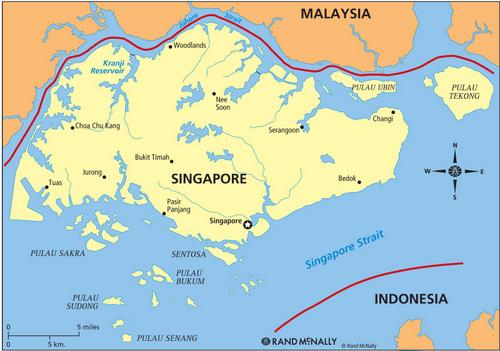
.jpg)
.JPG)
.JPG)
.JPG)
.JPG)
.JPG)
.JPG)
.JPG)
.JPG)
.JPG)
.JPG)
.JPG)
.JPG)
.JPG)
.JPG)
.JPG)
.JPG)
.JPG)
.JPG)
.JPG)
.JPG)
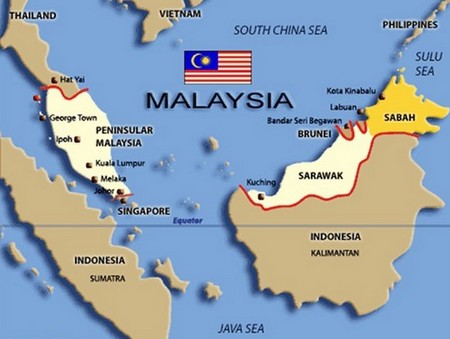
.JPG)
.JPG)
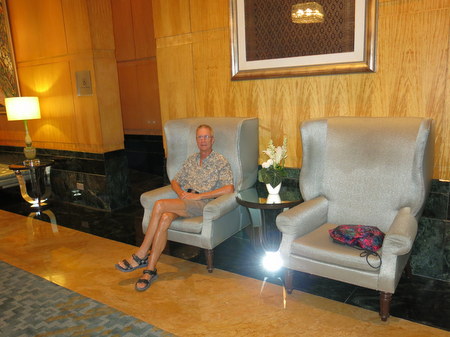
.JPG)
.JPG)
.JPG)
.JPG)
.JPG)
.JPG)
.JPG)
.JPG)
.JPG)
.JPG)
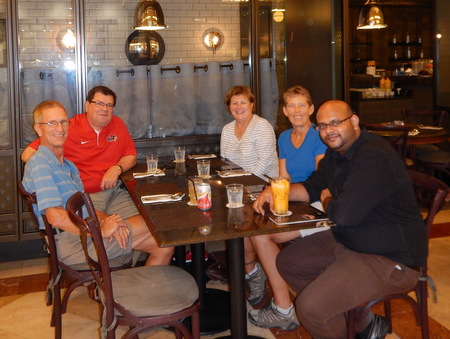
.JPG)
.JPG)
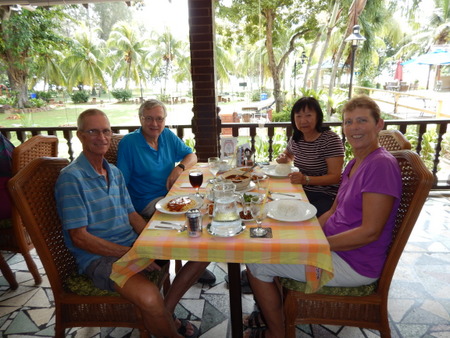
.JPG)
.JPG)
.JPG)
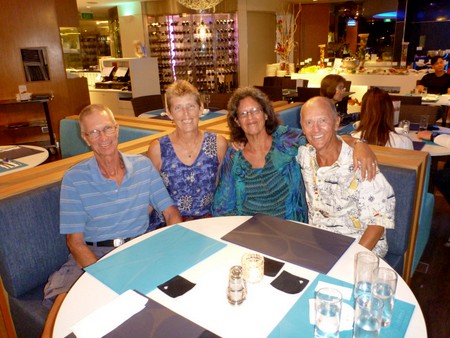
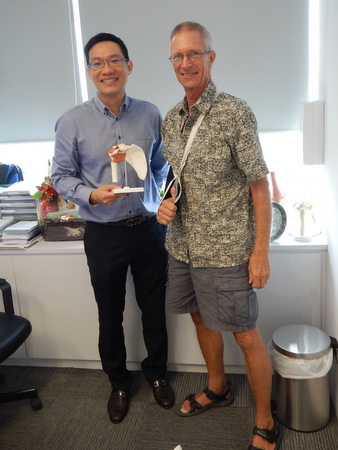
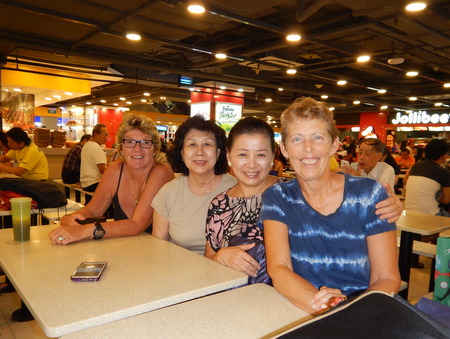
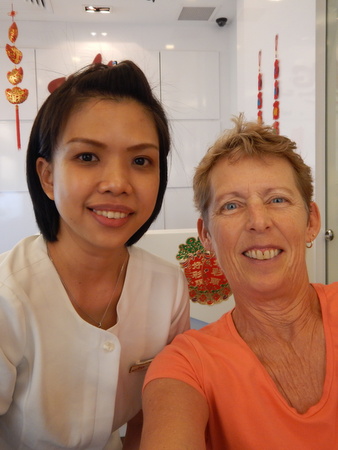
.jpg)
.JPG)
.JPG)
.JPG)
.jpg)
.jpg)
.jpg)
.jpg)
.JPG)
.JPG)
.JPG)
.JPG)
.JPG)
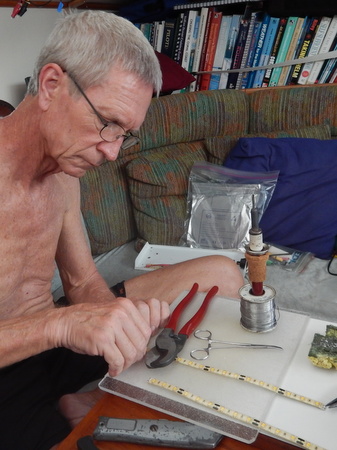
.JPG)
.JPG)
.JPG)
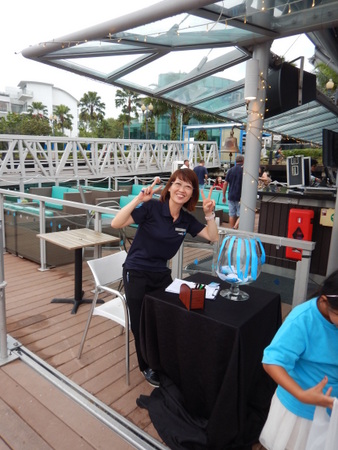
.JPG)
.JPG)
.JPG)
.JPG)
.JPG)
.JPG)
.JPG)
.JPG)
.JPG)
.JPG)
.JPG)
.JPG)
.JPG)
.jpg)
.jpg)
.JPG)
.JPG)
.JPG)
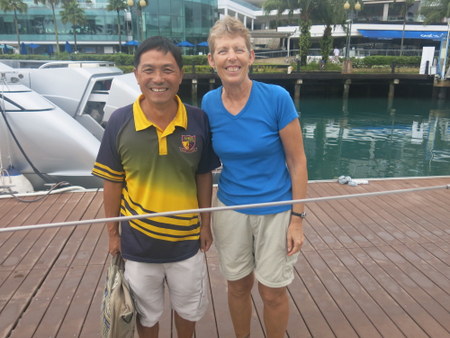
.JPG)
.JPG)
.jpg)
.jpg)
.JPG)
.JPG)
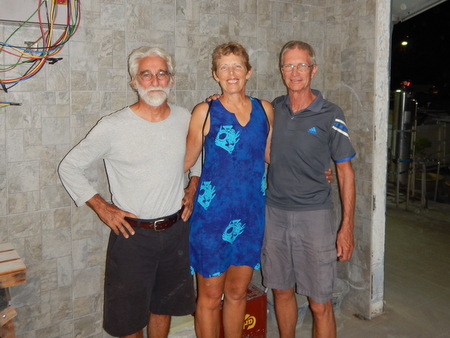
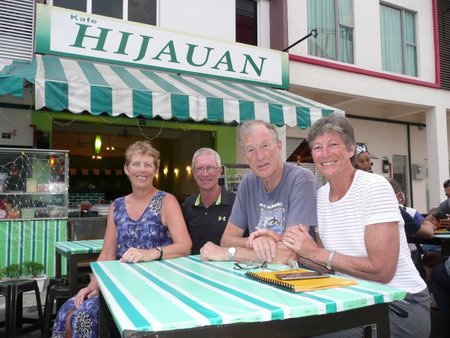
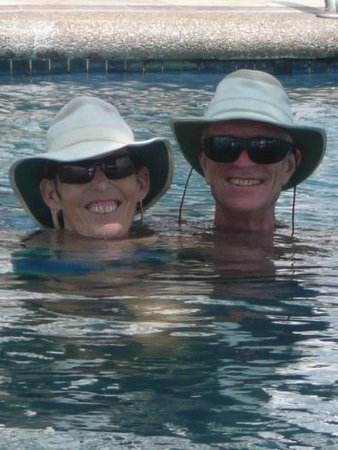
.JPG)
.JPG)
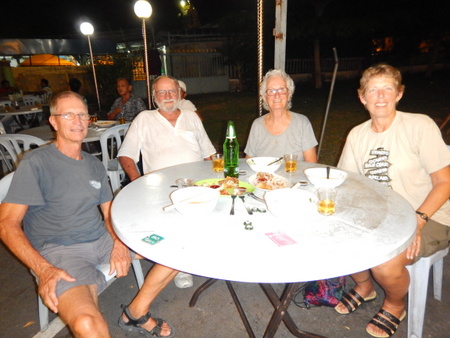
.JPG)
.JPG)